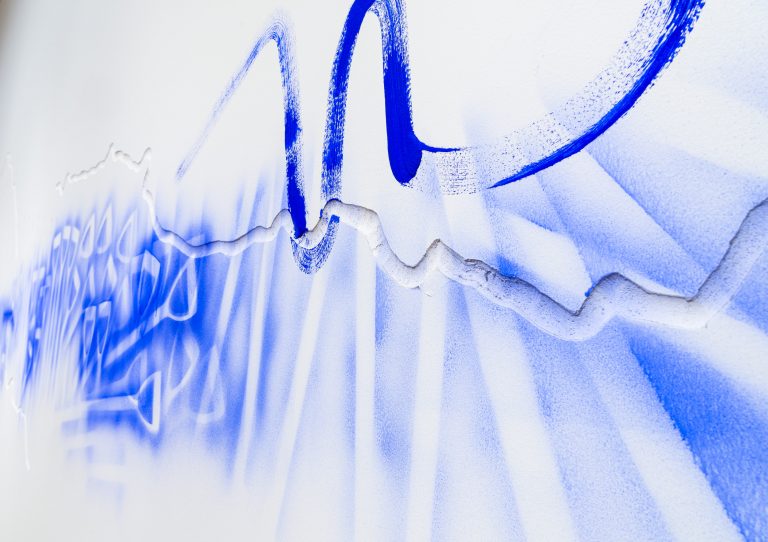We acknowledge the Traditional Owners of the land on which the Queensland Art Gallery | Gallery of Modern Art stands and recognise the creative contribution First Australians make to the art and culture of this country.

d harding / Bidjara, Ghungalu and Garingbal peoples / Australia b.1982 / Wall Composition in Reckitt’s Blue 2017 / Reckitt’s Blue laundry powder, charcoal and Grevillea robusta resin, incision into wall/ Commissioned 2017 with funds from anonymous donors through the Queensland Art Gallery | Gallery of Modern Art Foundation / © d harding
d hardingWall Composition in Reckitt’s Blue 2017
Not Currently on Display
d harding’s wall painting takes its inspiration from the paintings in and around Carnarvon Gorge in central Queensland, home to their Bidjara, Ghungalu and Garingbal people.
In Wall Composition in Reckitt’s Blue, harding has introduced an ultramarine blue pigment in place of traditional rock ochres. This blue is made from a powdered laundry detergent called Reckitt’s Blue, which was popular across the colonial frontier in the late nineteenth century. For harding, the laundry powder symbolises the domestic labour that generations of their female ancestors were forced into through government policy. In the top right-hand corner of the work, three spectral outlines represent generations of women from harding’s matrilineal line.
In place of the more common stencils of hands or artefacts, harding has used a shovel handle as a stencil form. In the same way that everyday objects, such as boomerangs and spears, were used in traditional painting, harding has used an object at hand – a tool from the floor of their studio. Gouges in the wall simulate natural landforms, ridges and caves, but also refer to the river systems connecting Aboriginal people throughout central and south-east Queensland.
d harding’s wall painting allows us to consider a fuller history of art production in Australia – from Indigenous (pre-European) to colonial to contemporary times – in one richly textured and layered work.
d harding is a Brisbane-based artist who is connected to Central Queensland through their birth and childhood in Moranbah, and their ancestral lineage with the Bidjara, Garingbal and Ghungalu peoples.
harding is influenced by the galleries of rock art and natural spaces throughout their grandparent’s countries, which largely fall within Carnarvon National Park in Central Queensland. They are currently a PhD candidate at the Queensland College of Art, where they graduated with honours from the Bachelor of Contemporary Australian Indigenous Art program in 2013.
harding has employed a variety of techniques and mediums to investigate the lived experiences of their family, some of whom were removed from their ancestral country to Woorabinda reserve by the Queensland Government.